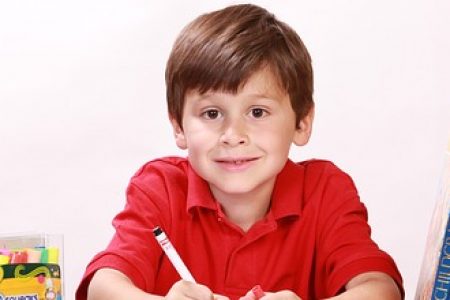Why is educating the gifted so difficult?
Despite increasing interest in suitable education for gifted children, there appears to be an increasing number of gifted children for whom it has been challenging to find the right school. How come it is proving so difficult to educate these children?
In 1994, 92 governments signed the UNESCO Salamanca Statement in which they proclaimed that every child has a right to education, and that all children should be given education that is in line with their unique qualities, characteristics, and educational needs. Ideally, according to the statement, education should be facilitated such that all children can be part of regular education, as this is seen as the “most effective means of combating discriminatory attitudes” (p. ix). The Netherlands was one of the signatories to the statement. Despite attempts to reform education and include as many diverse learners as possible, 25 years after signing the Salamanca Statement we still have not fully implemented an educational system that includes each and every child. Some researchers and practitioners have voiced concerns that some groups of children seem to have been “forgotten” in mainstream educational settings. One such group is gifted children. Despite a growing number of educational initiatives specifically aimed at providing education that is suitable for high potential learners, educating these children in mainstream settings still seems to remain a challenge. A number of misconceptions about giftedness appear particularly persistent and might play a role in our inability to provide these children with suitable education. Let’s explore some of these misconceptions below.
Zone of proximal development
For a long time, it has been a common belief that gifted children are independent learners and therefore can manage learning on their own. Given their potential for excellent results, this group of learners, it appears, has traditionally been “forgotten” in the Netherlands, as it was believed they did not need additional attention or help. However, recent research findings have suggested that high-ability children, just like any other children, learn within what we call a “zone of proximal development”. In this view, learning is seen as a social process, and children learn with and from more capable others. What makes gifted children different from other children in this respect is that they have the potential to learn at a faster rate and at qualitatively different levels than other children. In some cases, they need help, in the form of instructions or feedback, to a similar extent as children with lower intellectual abilities.
Variability among the gifted
A second misconception is that gifted children are a homogeneous group, sharing a large number of cognitive and social-emotional characteristics. In fact, however, research has shown that gifted children demonstrate great variability in their cognitive abilities, with different individual cognitive strengths and weaknesses. Moreover, these children, just like any other children, demonstrate variability in their preferred learning strategies. The learning process of these children, just like that of other children, appears to follow the principles of the overlapping waves theory. This model posits that children have access to a variety of different strategies to solve problems, and vary in their use of these strategies over time. One day they might use advanced, ‘smart’ strategies, while the next day they might use a less complex strategy.
Gifted through development
A third misconception is that giftedness is a stable, innate quality, and that people are ‘born gifted’. Although recent definitions of giftedness do indeed acknowledge differences in ability level, they also stress that giftedness is developmental in nature, with several external and internal factors influencing the extent to which giftedness is expressed throughout an individual’s life. In this view, giftedness can also be domain-specific, which means that giftedness is not necessarily reflected in all areas of life, or for example all school subjects, and that giftedness is dimensional in nature, rather than categorical (you either ‘are’ or ‘are not’ gifted) with different levels of giftedness.
Talent development
So what should we do to make education more suitable for high-ability learners? Well, all forms of education should certainly adapt to individual differences in learning strategies, and preferences. There is certainly no ‘one size fits all’ approach from which all gifted children can benefit equally. More importantly, education should be based more on talent development principles. The underlying idea behind these principles is that education should facilitate development of psychosocial skills that support high performance, persistence, and creativity. In this way, education would have more opportunities for developing the talents of all children, regardless of their background or our ideas about their intelligence level. We must remember that all children have potential, and that potentially high-potential children do not automatically, in each and every situation and context, perform at their best. They, too, need our help in fulfilling their potential.





